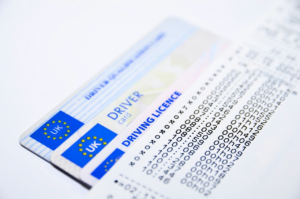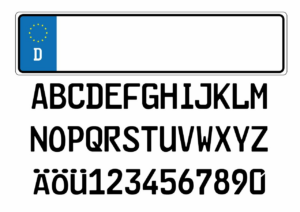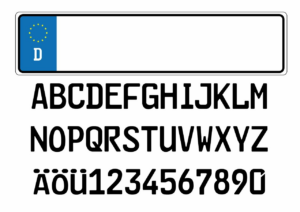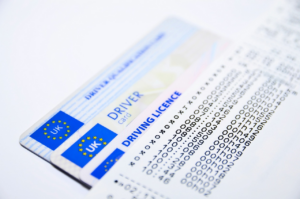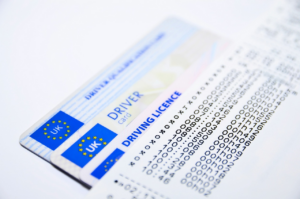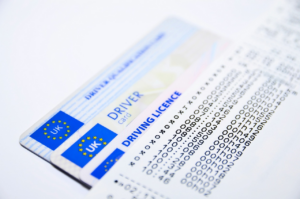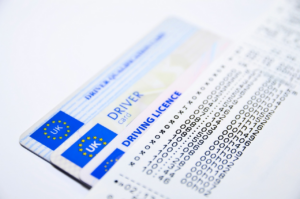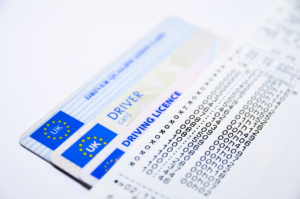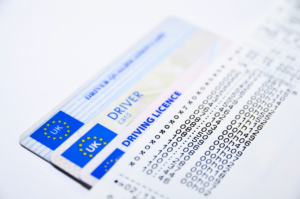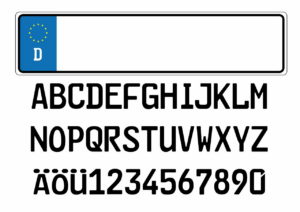Are you ready to take your driving skills to the next level and experience the thrill of riding a motorcycle? Adding a motorcycle endorsement to your Australian driving licence is easier than you think!
With a few steps and a bit of practice, you can become a licensed motorcycle rider and enjoy the freedom of cruising down the open road.
Before you get started, it’s important to check your eligibility. You must hold a current and valid Australian driver’s licence, and you must meet the minimum age requirements for the class of motorcycle you wish to ride.
Once you’ve confirmed your eligibility, you’ll need to study for the written test and complete a motorcycle safety course. Don’t worry – we’ll guide you through each step of the process to ensure you’re fully prepared to hit the road on your new motorcycle endorsement.
Check Your Eligibility
Make sure you’re eligible before diving into the process – don’t want any roadblocks on your journey to cruising on two wheels!
To add a motorcycle endorsement to your Australian driving license, you must first check your eligibility. You must hold a current and valid driver’s license issued by any Australian state or territory, and you must have held this license for a minimum of 12 months. Additionally, you must be at least 18 years of age before applying for a motorcycle endorsement.
If you have any medical conditions that may affect your ability to ride a motorcycle safely, you may need to provide medical clearance from your doctor. Once you have confirmed that you meet these eligibility requirements, you can move on to the next step in the process of adding a motorcycle endorsement to your Australian driving license.
Study for the Written Test
Studying for the written test is a crucial step towards legally riding a motorcycle on Australian roads. It may seem daunting at first, but with the right mindset and preparation, you can pass the test with flying colors. Here are some tips to help you study effectively:
-
Familiarize yourself with the road rules and regulations for motorcyclists. You can find the information in the official Road Users’ Handbook, which is available online or at your local motor registry.
-
Take practice tests to gauge your knowledge and identify areas where you need improvement. There are many free online resources that offer mock tests for the motorcycle written test.
-
Use visual aids and mnemonic devices to help you remember important information. For instance, you can create flashcards with road signs and their meanings, or use acronyms to remember the different types of protective gear.
-
Stay focused and motivated throughout your study sessions. Set aside regular study time, avoid distractions, and reward yourself for making progress.
Remember that passing the written test is a crucial step towards achieving your goal of riding a motorcycle legally in Australia.
By following these tips, you can increase your chances of passing the motorcycle written test and obtaining your motorcycle endorsement. Remember to stay committed, stay focused, and stay motivated throughout the process. Good luck!
Schedule and Take the Written Test
Now it’s time for you to schedule and take the written test, so you can start your journey towards legally riding a motorcycle on the road.
The first step is to contact your local licensing authority and schedule a test date. Make sure you have all the necessary documentation, including your current driver’s license, proof of identity, and any other required paperwork. You may also need to pay a fee to take the test, so be sure to inquire about this beforehand.
Once you have scheduled your test, it’s important to start studying as soon as possible. The written test will cover a variety of topics, including road rules, motorcycle safety, and traffic signs. Review the motorcycle handbook and practice tests provided by your licensing authority to ensure you’re fully prepared.
On the day of the test, arrive early and bring all necessary documentation. The test itself may be timed and consist of multiple choice or true/false questions. If you pass the written test, you’ll be one step closer to obtaining your motorcycle endorsement and hitting the road with confidence.
Complete a Motorcycle Safety Course
Ready to become a better and safer rider? Completing a motorcycle safety course is an exciting opportunity to learn new skills and techniques that will enhance your riding experience.
In Australia, completing a pre-learner motorcycle course is mandatory before obtaining a motorcycle learner permit. The course is designed to teach you basic motorcycle skills, traffic rules, and safety measures. Once you have obtained your learner permit, you can then take a motorcycle rider course, which will teach you advanced riding skills and techniques.
The motorcycle safety course includes both theoretical and practical components. You’ll learn about motorcycle maintenance, protective gear, and defensive riding strategies. You’ll also practice emergency braking, swerving, and cornering techniques in a controlled environment.
The course is designed to improve your confidence and control while riding on the road. Upon completion of the course, you’ll receive a certificate of competency, which you can use to apply for your motorcycle licence.
Remember, completing a motorcycle safety course isn’t only mandatory but also a responsible decision that’ll ensure your safety and the safety of others on the road.
Practice Riding on a Motorcycle
Now that you’ve completed your motorcycle safety course and obtained your endorsement, it’s time to start practicing riding on a motorcycle.
The first step is to find a suitable motorcycle that you’re comfortable with. Once you have your motorcycle, make sure you have the appropriate safety gear and equipment to protect yourself.
Lastly, it’s important to learn and apply proper riding tips and techniques to ensure a safe and enjoyable experience on the road.
Finding a Suitable Motorcycle
Discovering a fitting bike that satisfies both your needs and comfort level is a crucial step when pursuing a motorcycle license.
The first thing to consider is the type of riding you plan on doing. If you’re looking for a bike that will primarily be used for commuting, a smaller, more nimble bike may be the better choice. On the other hand, if you plan on taking longer trips or touring, a larger, more powerful bike with more storage options may be a better fit.
Another important factor to consider is your physical size and strength. You want to make sure that you can easily handle and maneuver the bike, especially if you’re just starting out. Take the time to sit on different bikes and get a feel for their weight and balance.
It’s also a good idea to take a test ride before making a purchase to ensure that you’re comfortable with the bike’s handling and performance. Remember, finding the right motorcycle may take some time and research, but it’s worth it to ensure a safe and enjoyable riding experience.
Safety Gear and Equipment
Ensuring your safety on the road is crucial, so let’s explore the importance of wearing proper gear and equipment when riding a motorcycle.
First and foremost, wearing a helmet is a legal requirement in Australia for all motorcycle riders. But not just any helmet will do – it must be approved by the Australian Standards and have a sticker indicating this. A properly fitting helmet can help protect your head in the event of an accident, so make sure to measure your head and try on different helmets before purchasing one.
In addition to a helmet, you should also wear protective clothing such as a motorcycle jacket, pants, gloves, and boots. These items can help protect your skin from road rash and other injuries in the event of a crash. Look for clothing made from durable materials such as leather or Kevlar, as well as clothing with armor padding in key areas.
It’s also important to wear high-visibility clothing to make yourself more visible to other drivers on the road. Remember, your safety is in your own hands, so make sure to invest in quality gear and equipment before hitting the road on your motorcycle.
Riding Tips and Techniques
Wearing proper safety gear is just the beginning of being a responsible and skilled motorcycle rider. Mastering riding tips and techniques is crucial for a safe and enjoyable ride. Here are some essential riding tips to help you become a better rider:
-
Look where you want to go: Keep your eyes focused on where you want to ride, not on the road immediately in front of you. This technique is called "looking through the turn," and it helps you maintain balance and control while riding.
-
Use your body position: Your body position plays a significant role in how your motorcycle handles. By leaning your body towards the direction of the turn and keeping your head up, you’ll be able to navigate turns more effectively.
-
Brake before the turn: It’s essential to slow down before entering a turn. Applying the brakes while turning can cause your motorcycle to skid or lose balance. Gradually reducing your speed before the turn will help you maintain control and stability.
By following these basic tips, you’ll be able to ride with greater confidence and skill. Remember that practice makes perfect, so take the time to practice these techniques until they become second nature.
Schedule and Take the Practical Riding Test
Now it’s time to schedule and take your practical riding test to finally hit the road on your motorcycle. You can book your test online or by phone through your local transportation authority. Make sure to have all the necessary documents, such as your learner’s permit, identification, and payment for the test fee.
Before the test, ensure that you’ve practiced enough and feel confident on your motorcycle. During the test, you’ll be evaluated on your ability to control your motorcycle, follow road rules, and execute safe maneuvers. The test typically takes around 30 minutes and includes various scenarios such as riding in traffic, making turns, and emergency stops.
Once you pass the test, you’ll receive your motorcycle endorsement and can legally ride on the road. Congratulations, and enjoy your newfound freedom on two wheels!
Receive Your Motorcycle Endorsement
You’ve finally passed your practical riding test, and it’s time to hit the open road on your trusty bike. Congratulations!
Now that you’ve successfully completed the test, you’ll need to receive your motorcycle endorsement before you’re legally allowed to ride on public roads in Australia. The process of receiving your endorsement varies slightly depending on which state you live in, but in general, you’ll need to provide proof of your test results and pay a fee to have the endorsement added to your driver’s licence.
In most cases, you’ll receive your motorcycle endorsement in the mail within a few weeks of completing your practical riding test. Once you have it, you’re free to hit the road and start exploring Australia on two wheels.
However, it’s important to remember that riding a motorcycle requires skill, focus, and a heightened level of awareness. Always wear proper safety gear, obey traffic laws, and take extra precautions when riding in adverse weather or road conditions.
With practice and patience, you’ll soon become a confident and skilled rider – and there’s no better feeling than cruising down the highway on your motorcycle.
Enjoy the Freedom of Riding a Motorcycle in Australia!
Get ready to experience the thrill of the open road and the freedom that comes with riding a motorcycle in this beautiful country!
There’s nothing quite like the wind in your hair and the rush of adrenaline as you navigate the twists and turns of Australia’s scenic roads.
Whether you’re looking to explore the countryside or commute to work, riding a motorcycle is a convenient and exciting way to get around.
But before you hit the road, it’s important to remember a few key safety tips. Always wear proper protective gear, including a helmet, gloves, and sturdy boots. Be aware of your surroundings and follow traffic laws. And most importantly, practice safe and defensive driving techniques.
With these precautions in mind, you can enjoy the freedom and excitement of riding a motorcycle in Australia to the fullest.
Frequently Asked Questions
How long does it typically take to receive your motorcycle endorsement after passing the practical riding test?
After passing the practical riding test, it typically takes around 4-6 weeks to receive your motorcycle endorsement.
During this time, the licensing authority will review your application, verify your eligibility, and process your endorsement.
It’s important to note that the exact timeline may vary depending on the state or territory where you reside.
If you haven’t received your endorsement after 6 weeks, it’s recommended that you check in with your local licensing authority to ensure that there are no issues with your application.
With your motorcycle endorsement, you’ll be able to legally ride a motorcycle on public roads in Australia.
Are there any age restrictions for obtaining a motorcycle endorsement in Australia?
If you’re looking to obtain a motorcycle endorsement in Australia, it’s important to know that there are age restrictions in place. To be eligible for a motorcycle license, you must be at least 16 years old.
However, the type of motorcycle license you can obtain will depend on your age and experience level. If you’re under 25 years old, you’ll need to complete a pre-learner course before you can take the motorcycle knowledge test. Once you pass the test, you’ll be issued a learner’s permit, which will allow you to ride on public roads.
After a minimum of 3 months, you can take the practical riding test to obtain your motorcycle license. If you’re over 25 years old, you can skip the pre-learner course and go straight to the motorcycle knowledge test.
Can you use a scooter or moped to complete the practical riding test?
To complete the practical riding test and obtain a motorcycle endorsement in Australia, you may be wondering if you can use a scooter or moped. The answer is yes, you can use a scooter or moped as long as it meets certain criteria.
The vehicle must have an engine capacity of at least 50cc, a maximum speed of at least 50 km/h, and two wheels. Additionally, the vehicle must be registered, insured, and roadworthy.
It’s important to note that if you do pass the test on a scooter or moped, your license will only permit you to ride that type of vehicle and not a motorcycle.
Do you need to have your own motorcycle to complete the practical riding test?
To complete the practical riding test for a motorcycle endorsement on your Australian driving licence, you don’t necessarily need to have your own motorcycle.
In fact, many testing centres offer motorcycle rentals for the purpose of the test.
However, it’s important to note that you’ll need to have a valid learner’s permit or provisional licence, as well as the appropriate safety gear, such as a helmet, gloves, and protective clothing.
Additionally, it’s recommended that you have some prior experience or training on a motorcycle before attempting the test, as it can be challenging for beginners.
Overall, while owning a motorcycle isn’t required, proper preparation and safety precautions are essential for successfully completing the practical riding test and obtaining your motorcycle endorsement.
If you already have a motorcycle endorsement from another country, do you still need to go through the process of obtaining one in Australia?
If you already have a motorcycle endorsement from another country, you will still need to go through the process of obtaining one in Australia.
This involves completing a knowledge test and a practical riding test, unless you’re exempt due to holding a license from a recognized country.
To determine if your country is recognized, you can check with the relevant Australian transport authority.
It’s important to note that if you’re found to be riding without a valid license or endorsement, you may face penalties such as fines or even having your motorcycle impounded.
So, it’s essential to ensure that you have the appropriate license before riding a motorcycle in Australia.
Conclusion
Congratulations! You’ve successfully obtained your motorcycle endorsement and are now ready to hit the road on your two-wheeled machine in Australia.
It may have taken some effort and dedication to achieve this milestone, but the rewards are well worth it. With your endorsement in hand, you can now enjoy the freedom and excitement of riding a motorcycle.
Remember to always prioritize safety when riding your motorcycle. Follow traffic rules, wear appropriate protective gear, and continuously improve your riding skills. Stay alert and aware of your surroundings at all times.
With proper training and cautiousness, you can confidently navigate the roads on your motorcycle and have a thrilling experience. So go ahead, ride on and embrace the adventure that awaits you!


